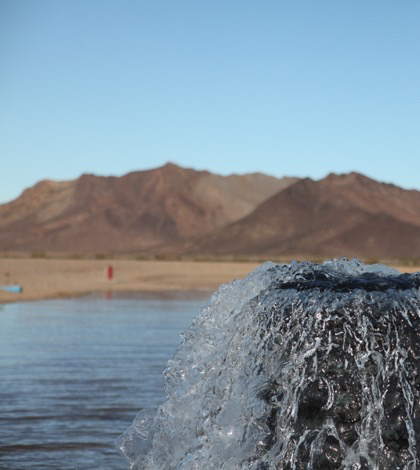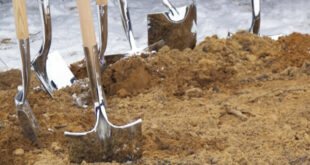The Inland Empire will see its first major water infrastructure project in a decade begin with the construction of the Cadiz Water Project in 2016. Not since the beginning of the Metropolitan Water District’s Inland Feeder project which started construction in 1997 has a new water conveyance project begun construction in Southern California.
The Cadiz Water Project will consist of a 43 mile pipeline to connect an aquifer in the east Mojave Desert containing up to 34 million acre feet of water to the Colorado River Aqueduct which transfers water to areas throughout Southern California. This aquifer is approximately the size of Lake Mead on the Colorado River. The first phase is designed to provide up to 50,000 acre feet of water per year to the state which is suffering from one of the worst droughts in recent history.
The pipeline for the Cadiz Water Project is planned to be constructed underground in an existing, already disturbed right of way and rail line owned by the Arizona & California Railroad. The use of railroad right of way for utilities such as water is common place throughout the United States and eliminates the need to disturb pristine and environmentally sensitive areas of the Mojave Desert.
Like any new infrastructure project, the Cadiz Water Project was subject to an extensive California Environmental Quality Act (CEQA) review and permitting process. In 2011, after years of technical analysis and environmental surveys, a draft environmental impact report was issued. As part of the DEIR, a first-of-its kind groundwater management, monitoring and mitigation plan or GMMMP was developed to be administered by the County of San Bernardino under a memorandum of understanding.
Under the MOU the County of San Bernardino ultimately maintains control over the aquifer which will be regularly monitored for water level and quality. The GMMMP will insure the protection of desert resources is including mountain springs, vegetation, and water and air quality.
The final environmental impact report was issued in July of 2012 responding to comments from numerous environmental and public agencies including the National Parks Service. A legal challenge to the EIR was rejected by a state court in 2014 and all approvals for the project were upheld.
The Cadiz Water Project currently has participation agreements or letters of intent with Jurupa Community Services District, Golden State Water Company, Suburban Water Systems, California Water Service Company, Three Valleys Municipal Water District, Santa Margarita Water District and the Lake Arrowhead Community Service District. Twenty percent of the water supplied is guaranteed under the MOU with the County of San Bernardino for San Bernardino County water agencies.
While California has engaged in significant water restrictions and conservation efforts, particularly in light of Governor Jerry Brown’s emergency proclamation, it remains vital that new sources of renewable, clean water be generated for California. The Cadiz Water Project provides a portion of that sustainable water along with renewed efforts to develop desalinization plants along the California Coast and water recycling.
The second phase of the Cadiz Water Project would add storage capacity for up to 100 million acre feet of groundwater storage space in the aquifer system for imported water. Recharge basins would be constructed on Cadiz Inc. property to percolate imported water during periods of higher rainfall for use during periods of drought.
The first phase of the project is expected to create 2,500 jobs over the two year construction of the project along with $250 million dollars invested in the local economy, which suffers from one of the highest unemployment rates in California.
 California Water News Daily Your Source For Water News in California
California Water News Daily Your Source For Water News in California


